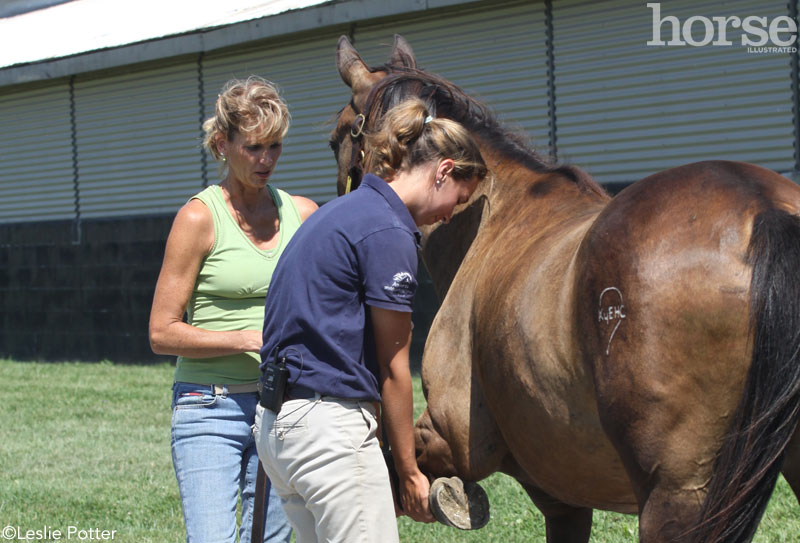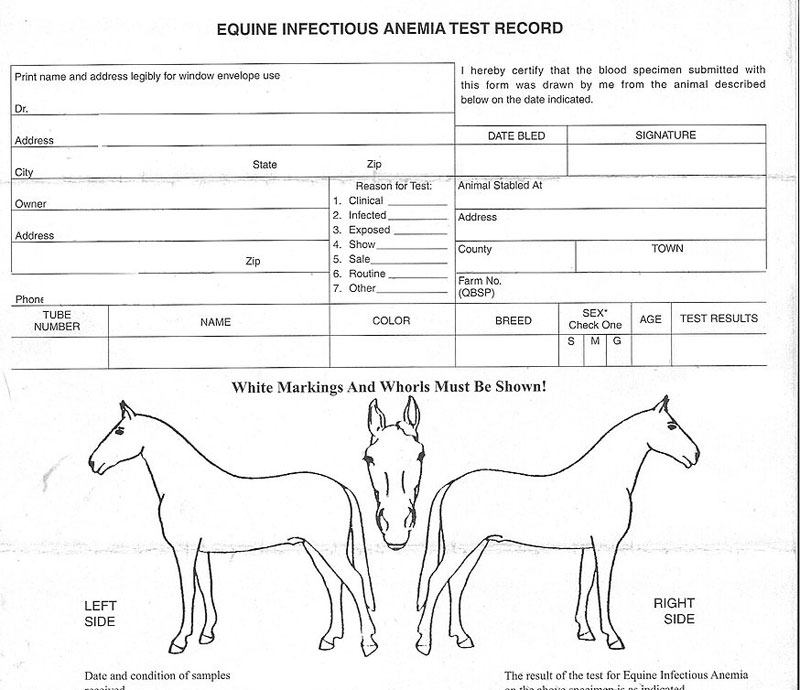
Hopefully you like your horse’s vet. And hopefully your horse’s vet likes you, too. A veterinary/client relationship is a two-way street, so how can you make sure you uphold your end of the partnership for the benefit of your horse? Here are five tips to help you become your vet’s favorite client.
1. Be ready.
A quiet, well-lit area is a great place to work and if possible at your barn, scope out such a place for your horse’s appointment. If you know your vet is going to need a power supply, such as for a power float or endoscope, locate the nearest plug and extension cord.
2. Be engaged.
Know what you want from your vet for a particular appointment. If it’s a Coggins test and a lameness exam, be prepared. If you’re not sure what a certain examination or procedure entails, consider calling your vet ahead of time to make sure you understand what’s going to happen and what is needed. Lists are handy if you’re afraid you will forget something.
One huge hint if you want to become your vet’s least favorite client: be sure to talk on your cell phone during the entire visit. All snark aside, remember that your vet bill includes not only the medicine your horse receives, but also payment for your vet’s time, attention, and expertise. Be engaged and attentive during the appointment and get your money’s worth!

3. Be knowledgeable about your horses.
It is a frustrating visit indeed when a vet shows up to draw twenty blood samples for Coggins paperwork and the person at the barn knows nothing about any of the horses. Certain paperwork for Coggins tests and health papers requires a horse’s registered name, age, breed, color, and address of the owner. Without this information, the forms will be incomplete and this sometimes causes a delay in getting the paperwork back. If you’re ever in charge of handling someone else’s horse for the vet, no matter what the appointment is for, try your best to know about the horse. Of course the same goes for your own animal; we all have moments of forgetting our horse’s registered name or date of birth or details of a recent medical complication. If there is important information you want your vet to have, writing it down beforehand is the way to go.
4. Ask questions.
Veterinarians love to educate their clients; that’s part of what makes the job great. Standing around in a barn talking about the latest in founder research or what makes the best pain management for chronic osteoarthritis–what could be better than that? Use your veterinarian as your primary source for medical information, not the Internet. Your vet will give you information custom-made for your location, your horse, and your situation. Your horse’s appointment is time for you, too. Get the most out of it and ask those burning questions! Trust that you aren’t asking anything that hasn’t been asked before and there really is no such thing as a stupid question, especially when it comes to your horse’s health.
5. Be honest.
Open, honest communication is key for a strong vet/client relationship. Be honest with your vet about your expectations and your abilities. For example, if you are not sure you’ll be able to give your horse oral medication twice daily for ten days, let your vet know before she prescribes treatment. There might be other treatment options, or your vet might even be able to offer tips on how to manage your horse’s meds. It’s extremely important for your vet to know any limitations you may have in providing care for a sick horse and there is no shame in admitting you are uncomfortable changing a bandage or taking a rectal temperature. Remember that both you and your vet want the very best for your horse. Working as a team will help you both reach that goal.
Likewise, if you have your vet out for a pre-purchase exam, find out the cost of the exam and what it entails before it begins. Surprises from cost and unreached expectations are two common ways that a medical relationship crumbles.
 When all else fails… Photo: Lara604 via flickr.com/Creative Commons 2.0
When all else fails… Photo: Lara604 via flickr.com/Creative Commons 2.0
5½. Food.
Take this last “tip” with a grain of salt, no pun intended. Vets are hungry people. Sometimes forced to live on fast food and gas station snacks, an equine veterinarian’s diet may, from time to time, be lacking. Therefore, it is extremely easy to quickly move up the ranks to #1 Client of All Time with an offering of an occasional brownie or muffin or other such goodie before your vet drives on down the lane. And here’s another tip: if, since things don’t always go as planned, you are not able to abide by Tips #1 through #5 above, a homemade chocolate chip cookie goes a long way in making up for an ornery, uncaught horse.







Love the advice…I will take that advice…I would like my vet and I to have a great relationship
Good advice. Me and my vet have a good relationship dispite the fact he hates my mare, lol. She does not like him either. He does understand when she’s unruly with him. He told me once “the only time I’m around her involves pain. Shots, or she’s hurt. You can get a horse used to many thing, except pain.” I’m extremely lucky to have a competent and understanding vet.
I always send a smallhomemade Christmas gift, and a card for his birthday.
The last tip works really well!
great advice